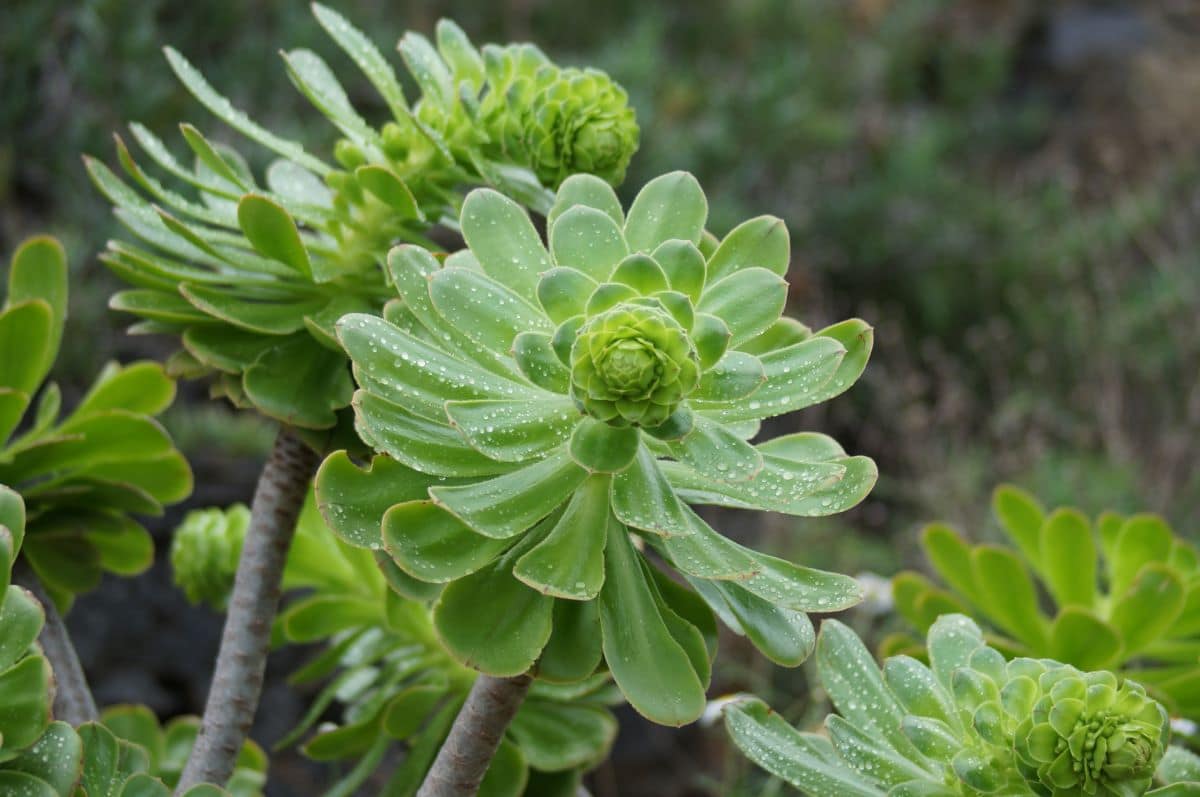
Aeonium arboreum
Succulent plants are those that when we see in a nursery, we can almost never avoid at least observing them. Many of us, after looking at them for a while, take them and then put them in the cart. They are beautiful, and also the care they require is quite simple.
There are several hundred species originating mainly from Africa and America, although there are some very popular that are from Europe, such as the Sempervivum, small plants that live in groups which usually do not exceed three centimeters in height, and whose resistance to cold is really amazing, since they are capable of resisting up to -20ºC. Wouldn't you like to know what the care of succulents is? This way you will always be able to enjoy the evergreens ... and any other variety.
How are succulents cared for?
All the succulents they are plants that require little care. For this reason, they are often a favorite of those who do not have a lot of time to care for plants, or do not have a lot of experience and want to start with a few easy ones.
Now, and here I'm going to get a little serious, it is a mistake to think that they can live with very little water. Based on my experience, there are other plants much more resistant to drought, such as Yucca, which only need occasional watering (as long as they are planted in the ground). But we are not going to deviate.
Having cacti and succulents in a patio or garden can be a very beautiful experience, since there are also many species that produce flowers with a high ornamental value. So that, let's see what care they require:
Where to put the succulents?
Succulents, that is, cacti and succulent plants, they are very demanding of light. In fact, that's the main reason why growing them indoors is not recommended. So where do you put them? On the outside always. In the event that there were frosts, then it would be necessary to look to have them inside the home, or in a greenhouse; but the rest of the year it is preferable that they are outside.
Do they need sun or shade?
Another question that is most often asked is whether cacti and succulents should be put in the sun or in the shade. The answer is that depends. The vast majority need direct sun, but there are others that prefer shade, such as Haworthia, Sanseviera, Schlumbergera, Ceropegia, Gasteria or Sempervivum.
When in doubt, it will always be better to put them in bright shade; that is, in a place where there is a lot of light but not direct sun. If you are going to want to have some indoors, we recommend choosing some that prefer shade, such as those already mentioned. Put them in a bright room, away from the window, and rotate the pot every day so that the light reaches all its parts equally.
How many times are the succulents watered?
It will depend on the season of the year, but in general they have to be watered twice a week in summer, and once a week the rest of the year. Of course, it must be taken into account that excess water causes very serious damage to its roots, so it is better to let the soil dry between one watering and the next so that there are no problems.
Likewise, every time you touch water, you have to pour water on the ground. And also you have to do it until it is well moistened; that is, until it comes out through the holes in the pot, or until it is seen to be very wet.
Symptoms of lack or excess of irrigation in cacti and succulents
Both cacti and fleshy plants have a hard time when they are very thirsty, and when, on the contrary, they have too much water. These are the symptoms they will show:
- Lack of irrigation:
- leaf drop (in succulents)
- dwarfing of the plant body (in cacti)
- slow or no growth
- very dry substrate or with inability to absorb water
- dry roots
- appearance of pests (mealybugs are common, but aphids and spider mites cannot be ruled out)
- Excess irrigation:
- soft or rotten stems, which may bend
- leaf drop (in succulents)
- fungal infection (the plant may have white or gray mold)
- brown or black roots
- zero growth
- substrate with verdin
- and sometimes they bloom to try to produce seeds
How is it treated? Good, in case the plant was going thirsty, what we would do is pour a lot of water on it. If it is in a pot, we will put it in a basin or container with water, and we will leave it there for about 30 minutes until it is well absorbed. And if it is on the ground, we will make a tree grate around it and pour plenty of water. If there are signs of plague, we can treat it with diatomaceous earth, for example, which is an ecological and very effective insecticide.
On the other hand, if what happens to him is that he is drowningIn case it is in a pot, we will take it out and cover the earth bread with absorbent kitchen paper. If everything gets wet quickly, we will remove it and put a new layer of paper. Then we'll leave it like that for one night. The next day, we will plant it in a new pot with a mixture of black peat with perlite in equal parts, or with cactus soil. As a preventive or curative treatment if there are already symptoms, we could apply a multipurpose fungicide for fungi.
What is the best soil for succulents?
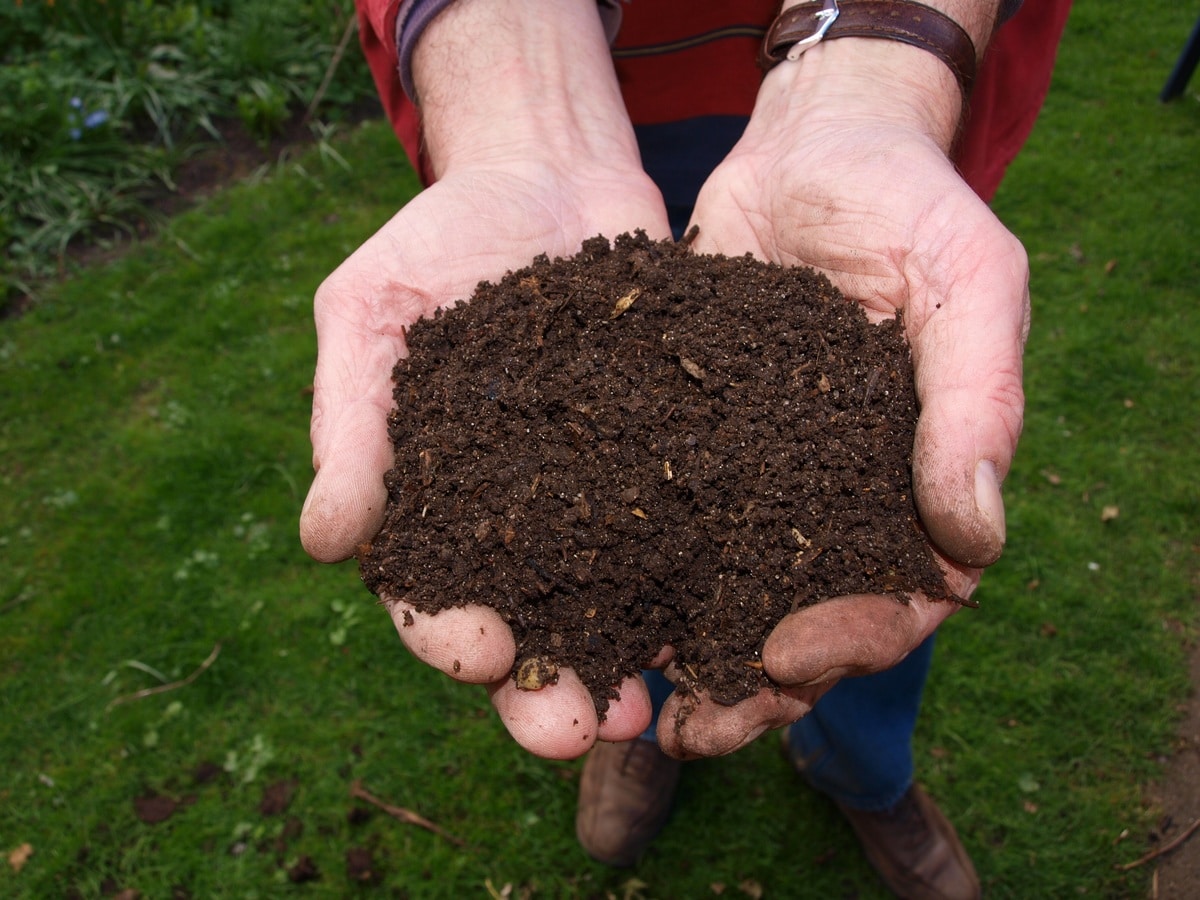
These are plants that grow in light, well-drained soils. Therefore, we advise that they be planted in soils or substrates that meet these characteristics. If you are going to choose to have them in pots, you should know that the standard mixture is black peat with perlite in equal parts (for sale here). However, they can also be filled with quality cactus soil (such as this), or even with pumice alone (for sale here) if the humidity is very high and / or it rains regularly.
When and how to transplant cacti and succulents?
In spring. It could be done in summer if they are plants that are having a hard time, for example, due to excess watering or because they are growing in a soil or land that does not absorb or filter water quickly. But in any case it is important that the roots are not manipulated too much, and that they are introduced as soon as possible in their new pot or in the planting hole.
Always use gloves to protect our hands, especially if cactus with thorns are to be transplanted. If they are large plantsIt is advisable to protect them with cork and over this put cardboard that will be attached to the plant with ropes, and that two people move it.
In case they are small succulentsWe will simply have to hold them with one hand at the base, and with the other, press the pot a little so that the soil is detached from it. Then, we can take them by the ground bread, and introduce them in a new pot or in the ground with ease. Of course, we must ensure that they are neither too high nor too low.
What are the pests and diseases of succulents?
Cacti and succulent plants can be victims of pests and diseases, especially when they are weakened for some reason (dehydration, stress due to cold or heat, lack of space). Therefore, we are going to tell you what are the pests and diseases that they can have:
- Pests: mealybugs, aphids, spider mites, whiteflies, snails, slugs. All can be controlled with ecological insecticides, such as diatomaceous earth (for sale No products found.) or neem oil (for sale here).
- Management: rust, phytophthora, mildew, alternariosis. These are treated with fungicides such as No products found..
How do succulents multiply?
You can get new plants if you multiply them by seeds, suckers, cuttings and shoots. In this video we talk about how to do it easily:
Types of succulents for beginners
To finish, if you want to know which are the easiest types of succulents to care for, then we are going to show you our selection:
Cactus
Focusing on cacti, there are many that will give you many joys, such as:
- Image - Wikimedia / Petar43
- Image - Wikimedia / Calvin teo
- Astrophytum asterias: it is a globular cactus without thorns that measures up to 10 centimeters in diameter by up to 5 centimeters high, which has yellow flowers which sprout in spring. You have to put it in full sun so that it can grow. Resists up to -3ºC. See file.
- Echinocactus grusonii: It is known as the mother-in-law seat. It starts out globular, but over the years it grows vertically, reaching up to 70-80 centimeters in height by about 50 centimeters in diameter. It has yellow or white spines depending on the variety, and it needs sun. Resists up to -4ºC. See file.
- Image - Wikimedia / Petar43
- Mammillaria elongata: it is a small cactus that is 30 centimeters high, with cylindrical and spiny stems, with reddish-orange spines, or yellowish. It has small 0,5-centimeter florets that sprout in spring. Resists up to -5ºC. See file.
- Pachycereus pringlei: it is an ideal cardón for large gardens. It has a shrubby bearing, with columnar and spiny stems that can measure 5-6 meters in height. It has a certain resemblance to the saguaro, but it grows much faster and withstands the cold better, down to -3ºC. See file.
Succulents
If we talk about succulents, our recommendations are the following:
- Image - Wikimedia / Andrew Butko
- Image - Flickr / Maja Dumat
- Aeonium arboreum: Aeonio is a magnificent plant with cylindrical stems and rosette leaves of green or reddish-brown color depending on the variety that reach a height of 30-50 centimeters. It blooms in spring-summer, producing yellow flowers. Resists up to -5ºC. See file.
- haworthiopsis fasciata (before it was haworthia fasciata): it is a small succulent that reaches a height of 5-7 centimeters, and has lanceolate and fleshy leaves. It forms groups of about 30 centimeters, and blooms in spring producing white flowers. It also needs shade, and resists up to -2ºC for a short time. See file.
- Image - Wikimedia / Emmanuel Douzery.
- sedum palmeri: it is a beautiful species of plant that you can have in hanging pots. It has green leaves with pink margins, and yellow flowers that appear in spring-summer. Resists up to -15ºC. See file.
- Sempervivum tectorum: Actually all Sempervivum are ideal, but S. tectorum is usually the most easily found in nurseries. It is a plant that forms groups, and has green rosette leaves. Its flowers are yellow, and the best thing is that it resists up to -20ºC. It has to be put in semi-shadow. See file.
What do you think of the succulents?
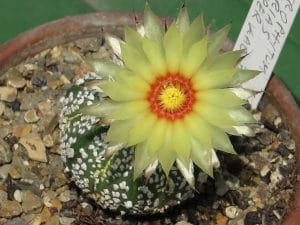



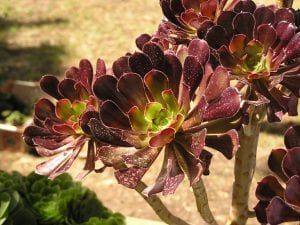

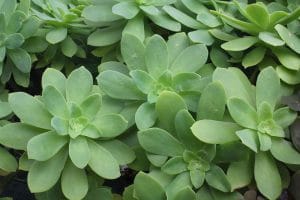

The information is appreciated, I want to learn more about succulents ..
Thanks Ana Micaela. In the blog you will find a lot of information about succulents 🙂